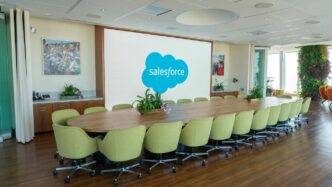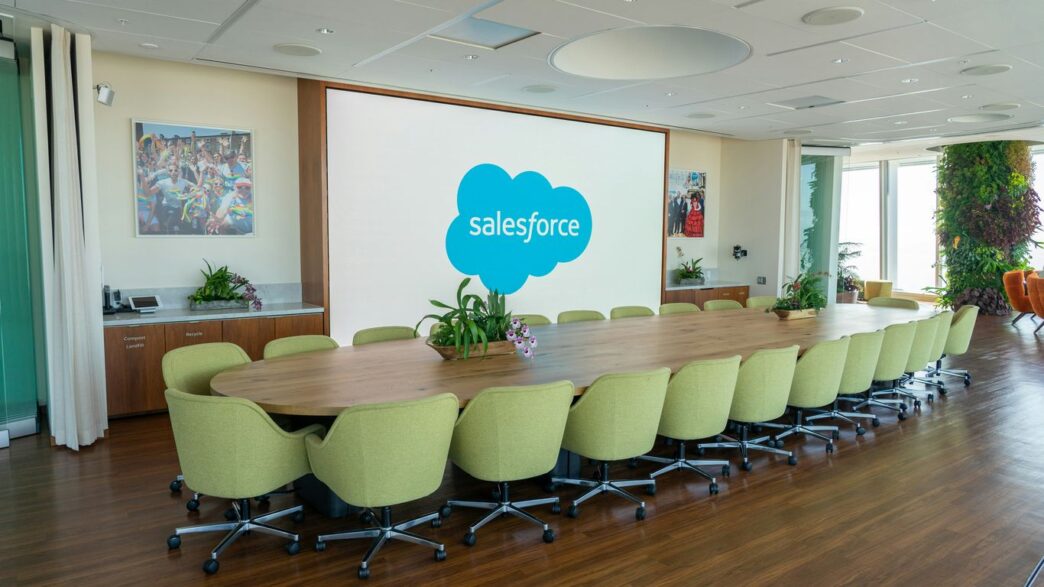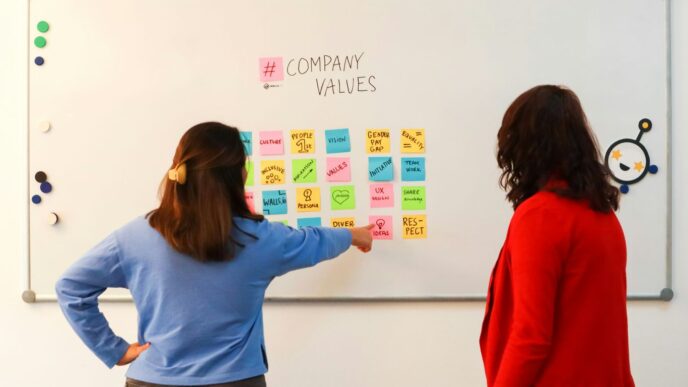The Rise of SaaS Software Companies in 2025
SaaS isn’t just a trend—it’s now the norm in nearly every business world you can imagine. By the middle of 2025, almost every company, big or small, uses at least one cloud-based app. It’s wild to think that just a few years ago, most of us were still managing clunky software on our own computers.
Widespread Cloud Adoption Across Industries
Cloud software is now the backbone of daily operations for businesses everywhere. From retail and real estate to professional services and construction firms, companies have ditched siloed, on-premise tools for flexible cloud solutions. Here are a few reasons this big shift happened:
- Easy access from anywhere (no more being stuck in the office just to pull a report)
- Scalability—small teams and massive companies can both use these tools
- Lower up-front costs, which is great if you’re just getting started
- Simple updates and bug fixes (usually, you don’t even notice them happening)
For example, platforms like cloud-based business apps are making it possible for small businesses to handle marketing, sales, and HR all in one spot. This saves time and, honestly, headaches for everyone involved.
Key Market Growth Statistics
Statistically, the SaaS market in 2025 is nothing to sneeze at:
| Statistic | Value |
|---|---|
| Market Size (2025, in USD) | $829.3 billion |
| 5-Year Growth (2020-2025) | 13.7% CAGR |
| Organizations using at least 1 SaaS app | 99% |
| Average SaaS tools per company | 112 |
| Percentage of business apps on SaaS | 85% |
Many corporations are now juggling hundreds of cloud-based apps, and even smaller businesses are using dozens daily. This massive growth is driven mostly by flexibility, how quickly you can get started, and the fact that everything is just a subscription away.
Shifting From On-Premise to Cloud Solutions
If you worked at a big company a decade ago, you know buying and installing software used to be a huge undertaking. Now, companies are moving away from those rigid, on-premise programs:
- No need for huge IT departments just to support software
- Security and maintenance handled by experts who do it around the clock
- Fast scaling—hire more people, and you can add them to the system instantly
- Constant access to the latest features (with almost no downtime)
By switching, companies are saving money and trimming a lot of complexity from their day-to-day. It’s not just about saving cash, though—it’s about being able to adapt, whether that’s supporting remote workers or just rolling with unpredictable changes in the market.
In short, 2025 is shaping up to be the year that SaaS isn’t just popular—it’s pretty much standard for keeping up with modern business.
Driving Business Agility and Scalability With SaaS
SaaS platforms really changed how companies handle growth and unpredictability. Gone are the days where you bought expensive software licenses and then crossed your fingers every time you needed to scale up or down. Now, businesses find themselves moving faster, handling ups and downs, and taking on new projects without that sinking feeling of risk.
Flexible Subscription-Based Models
Let’s talk about how subscriptions changed the game:
- Companies now pay for what they use—no more overspending on underused licenses.
- Monthly or annual fees make budgeting simpler and smoother.
- It lets small businesses and big corporations test new tools with almost no upfront cost.
Here’s a quick comparison to show the difference:
| Aspect | On-Premise | SaaS |
|---|---|---|
| Pricing Model | Large upfront | Pay-as-you-go |
| Maintenance | Internal IT | Vendor managed |
| Flexibility | Fixed seats | Scale up/down easily |
| Upgrades | Manual installs | Automatic, frequent |
Trying out new features or adding users doesn’t mean weeks of meetings or extra fees; you just tweak a subscription plan.
Rapid Deployment and Scaling Capabilities
Implementing new software can take weeks, sometimes months. SaaS slashes that timeline—usually to days. Sometimes even hours if you’re lucky and your IT folks don’t mind the change.
Here’s why it matters:
- Businesses roll out new solutions fast, so teams start working right away.
- Scaling up during peak season? Just add more users with a few clicks.
- Scaling down during slow periods? Cancel or downgrade, and you aren’t stuck with stuff you don’t need.
This speed isn’t just about software; it unlocks new business opportunities and helps keep costs predictable.
Supporting Remote and Hybrid Workforces
The old model of everyone working from the same location doesn’t fit most companies in 2025. SaaS is practically made for today’s spread-out teams:
- Staff can log in from anywhere, whether it’s their couch, a coffee shop, or across the globe.
- Collaboration features mean people can work together in real time—no emailing back and forth, no worrying about outdated files.
- IT support is lighter, too. Everything’s in the cloud, so you aren’t fielding calls about installs and updates on everyone’s laptops.
SaaS has become the backbone for the new way people work—flexible, easy, and quick to adjust. It’s not just about the tech; it’s about keeping up with how the world is changing, and making sure companies stay nimble no matter what.
How SaaS Software Companies Are Advancing Security and Compliance
SaaS companies in 2025 are finding themselves in an ongoing battle with cyber threats. Security is no longer something you take care of on the side — it’s at the center of every conversation, every product update, every board meeting. The pressure’s real, and for obvious reasons: breaches are more expensive than ever, and users won’t put up with their data being put at risk.
Built-In Cybersecurity Features
Modern SaaS apps don’t treat security as an extra — it’s built right into the core software. Here’s what you’re seeing everywhere now:
- Multi-factor authentication gets enforced right out of the box. Everyone from account managers to temporary contractors has to double-check who they are.
- End-to-end encryption is the standard — not just a sales point. Even backup copies use encryption.
- User roles and access controls are detailed; you can’t just give everyone admin access anymore — least-privilege is the norm.
- Suspicious login alerts and automated lockdowns trigger within seconds if something looks off.
Companies relying on traditional software just can’t keep up — the cloud makes these protections possible at scale.
Automated Updates and Patch Management
Remember when IT teams scrambled once a month to patch vulnerabilities? That’s nearly a thing of the past for SaaS. Now, updates often roll out weekly or even daily, quietly in the background.
Here’s why that matters:
- Security fixes deploy as soon as they’re available, not just when an organization remembers to schedule downtime.
- Bugs and loopholes don’t stick around long enough to be exploited.
- Customers don’t need big IT teams dedicated to patching — SaaS providers handle it all, removing a huge headache.
If you want a quick sense of how things changed, here’s a snapshot comparing companies that have adopted continuous, automated security updates vs manual patching:
| Approach | Avg. Time to Patch | Risk of Unpatched Bugs |
|---|---|---|
| Automated (SaaS) | <24 hours | Low |
| Manual (Legacy on-premise) | 2-4 weeks | High |
Achieving Industry-wide Compliance Standards
Audits used to give everyone a headache. Now, SaaS companies are baking compliance into everything they do because regulations keep piling on: GDPR, HIPAA, SOC 2, PCI, and more. Here’s how they make it work:
- Automated compliance checks run 24/7, not just once a year.
- Documentation and system logs are generated in real time — no more scrambling when a regulator comes calling.
- SaaS vendors maintain certification renewals and report any issues immediately, so customers aren’t left guessing.
SaaS platforms are increasingly using third-party tools that continuously scan for misconfigurations and weak spots. These tools tell both the customer and the provider if something isn’t set up right — like when somebody accidentally gives open access to sensitive data.
At the end of the day, it’s clear that SaaS providers are under pressure to be more transparent and reliable than ever. The boring truth: it’s the behind-the-scenes security and compliance work that’s keeping modern businesses afloat in 2025.
Transforming Data Analytics and Decision Making
Data is everywhere now. But just having data isn’t helpful if you can’t make sense of it. SaaS software companies in 2025 are making it so much easier for businesses to actually use their data. The new tools aren’t just more powerful, they fit more naturally into daily work, and that changes how teams operate day-to-day.
Real-Time Business Intelligence Tools
With SaaS, teams now get instant updates and business metrics in one place, so decision-makers don’t have to wait for someone to email a static report. Many platforms show dashboards that update every few seconds, pulling info from sales, customer service, and other apps. This helps:
- Spot trends and problems before they grow
- Share insights easily across different departments
- React faster to sudden market changes
A lot of companies are still fighting against scattered data. Almost 70% of workers spend over 20 hours weekly just looking for information stored in different places. Here’s a quick look at what companies are managing with SaaS BI tools:
| Benefit | Example |
|---|---|
| Centralized data views | Dashboards with all sources |
| Time saved searching | Automated data pulling |
| Better cross-team work | Shared live reporting |
AI-Driven Insights and Automation
AI features, like the ones seen in new SaaS products, go way beyond basic number crunching. They can spot weird changes (like a sudden sales drop) and send alerts right away. Pattern recognition and automation are everywhere now, reducing error and letting staff focus on higher-level work. As more companies use GenAI, entire processes—from forecasting to customer support—are handled much faster and smarter. For instance:
- AI finds outliers in your operational data
- Automated alerts for unusual trends
- Predictive analytics for planning
Some AI can even understand human language, so team members don’t need to be tech experts to get insights. Just type a question in natural language and get a smart answer. This is a trend you’ll be seeing more often in the future, kind of like other technology breakthroughs, such as new Virgin Galactic spaceship launches that change the overall industry.
Empowering Data-Driven Strategies
For most of us, being “data-driven” used to just mean running some reports now and then. Now, with SaaS tools:
- Leaders rely on live KPIs directly in their planning sessions.
- Every department can use the exact same up-to-date numbers.
- Projects get tracked so results are based on facts, not guesswork.
Decision-making is less about gut feeling and more about what the numbers actually show. It’s not always perfect, but moving in this direction helps businesses avoid costly mistakes and react before problems get out of hand.
SaaS in 2025 isn’t just about storing your info in the cloud. The real game-changer is how these platforms help regular teams make smarter, faster choices—without needing to be data experts themselves.
Elevating Customer Experiences Through SaaS Innovation
Turning customers into fans isn’t easy, but in 2025, SaaS platforms are making it a whole lot simpler. These companies use tech—and a lot of creativity—to make people’s first and lasting impressions better than ever. Here’s a look at some of the ways SaaS tools are changing the game for customer experience.
Personalized Onboarding and Support
You know that clunky feeling you get when you try using a new software and have no clue what’s going on? SaaS companies are taking that out of the equation. Onboarding is becoming more personalized by:
- Creating step-by-step setup guides that adapt based on who you are and what you need
- Offering in-app tutorials and walkthroughs, with video or interactive demos
- Emailing tips and reminders that actually make sense for your use case
The result? People get what they need faster, feel less frustrated, and are more likely to stick around. Support isn’t just reactive anymore—SaaS platforms are using data to spot problems before you even notice, sometimes fixing things behind the scenes or reaching out proactively.
AI Chatbots and Automated Interactions
Chatbots are everywhere, but they’re getting smarter and more useful. In 2025, these bots can handle more than just basic FAQs.
Some things they’re now doing well:
- Answering technical questions instantly, even at 3 a.m.
- Escalating complex requests to humans when needed, so you’re not stuck in an endless circle
- Guiding users through troubleshooting steps or helping with billing
A recent survey found:
| Feature | 2023 % Used | 2025 % Used |
|---|---|---|
| 24/7 AI Chat Support | 68% | 91% |
| Automated Ticket Routing | 54% | 87% |
| Proactive Assistance (AI-driven) | 31% | 70% |
That’s a big jump in just two years.
Mobile-Optimized SaaS Applications
People need software that goes where they go—laptops, tablets, phones, even watches. SaaS companies are making sure their apps work well (and look good) on every device. Recent surveys show companies with mobile-optimized SaaS keep customers longer and get higher satisfaction scores.
Some improvements customers notice:
- Simple navigation and clear buttons (no more squinting or blind-tapping!)
- Push notifications for important updates, but not too many
- Features that feel the same on mobile as on desktop, making switching devices smooth
All this adds up to a better experience—less friction, more value, and a lot more people willing to recommend these tools to others. In 2025, "customer experience" isn’t just a goal—it’s built into the software from the ground up.
Ecosystem Integration and Automation in SaaS Solutions
SaaS platforms aren’t just handy tools for getting work done—they’re turning into massive networks that connect everything from old-school legacy software to the newest cloud-based apps. In 2025, companies want their software to play nicely together right from the start, not after months of confusing IT projects. It’s all about cutting those endless copy-paste routines and pulling different teams’ data into one digital space. Here’s a look at how SaaS is making this happen now.
Seamless Third-Party Integrations
Most businesses juggle dozens of apps. Jumping between them? That’s a time-waster. The latest SaaS platforms plug in with other tools straight out of the box. Numbers back it up: researchers expect that 85% of business apps will be SaaS-based by the end of 2025, with the majority offering native integrations (see the stats below).
| Year | % of Business Apps SaaS-Based | % Support Native Integrations |
|---|---|---|
| 2022 | 70% | 60% |
| 2025 | 85% | 82% |
A few things to ask before picking a platform:
- Will it work with your current systems, including any old legacy apps lingering around?
- How does it keep your data safe while integrating?
- Is the process smooth, or will it cost an arm and a leg?
Not all integrations are automatic, so it pays to think through your existing tools before signing a contract.
API-Driven Workflow Automation
APIs—basically, software bridges—let apps talk to each other. SaaS solutions now include these connections as a standard, keeping teams from needing custom code every time they want to automate something new. Modern platforms, like no-code integration hubs, have hundreds of these connections ready to go. Here’s how API automation is helping out:
- Handles repetitive tasks like updating customer info in several systems at once.
- Triggers actions automatically—for example, when a sale closes, it kicks off invoicing and sends a welcome email.
- Frees up IT teams by letting business users set up rules and automations themselves.
Reducing Data Silos Across Departments
Companies get stuck when data’s scattered across a bunch of platforms. Data silos slow down decisions and frustrate employees—over two thirds say they spend at least 20 hours a week trying to pull info from different apps. SaaS solutions are fighting these headaches in a few ways:
- They centralize everything into a single dashboard or portal, making info from sales, support, and finance visible at a glance.
- Document and digital asset management tools connect different content sources, so staff can stop hunting for files spread out in ten locations.
- Integration Platform as a Service (iPaaS) tools link all the company’s information pipes, syncing records and making sure everyone’s on the same page.
When data finally flows smoothly, teams waste less time on manual transfers—and companies move faster. It’s not magic, but in today’s world, efficiency like that really adds up.
Emerging SaaS Trends Reshaping the Market

It’s 2025, and the SaaS market keeps moving fast, with some clear patterns shaping its growth. Here’s a look at what’s making waves this year:
Vertical-Specific and Micro-SaaS Solutions
More SaaS tools now zoom in on serving particular industries, like construction or finance, bringing just what those businesses need right out of the box. Instead of trying to be one-size-fits-all, these solutions are more focused—think of them as custom tools for specific jobs. This shift to micro-SaaS means smaller, tightly specialized tools are popping up, usually built by small teams or even solo developers. These target common gaps bigger platforms often miss. Why does it matter?
- Businesses in "niche" markets finally have access to software that actually fits their needs.
- Faster onboarding and easier processes (no more endless customization!)
- Lower costs, since these tools usually skip bloat and focus on their main job.
Sustainable and Eco-Friendly SaaS Initiatives
Sustainability isn’t just a buzzword. More SaaS companies are going green because
- Clients increasingly want vendors who cut their carbon footprint.
- Cloud software is generally easier on energy use than the old server-in-the-closet model.
- Big names in SaaS, like Salesforce, are now running off 100% renewable energy.
Check this table showing how eco-minded SaaS stacks up:
| Practice | Impact in 2025 | % of SaaS firms using it |
|---|---|---|
| Renewable Energy Sources | Lowers emissions | 68% |
| Hardware Lifecycle Plans | Cuts electronic waste | 52% |
| Code Optimization | Less energy per function | 40% |
| Data Center Efficiencies | Reduced cooling, cost | 60% |
(Source: Industry research, 2025)
Buyers see real value in software providers who back up their green talk with action. According to some recent numbers, most buyers now trust brands that act responsibly, which helps explain why sustainability has become so mainstream in the SaaS world. This cloud adoption trend is one of the big factors driving business choices today.
The Proliferation of Low-Code and No-Code Platforms
You don’t have to be a tech wizard to build with SaaS these days. Tools for low-code and no-code development let just about anyone create apps, automate workflows, or tweak software for their company—all without deep programming knowledge. This trend is growing fast. Why?
- Saves time: No endless back-and-forth with IT teams.
- Faster updates and fixes, delivered by people closest to the problem.
- More departments experimenting with their own tools without bothering their overworked developers.
Key benefits include:
- Non-technical staff can automate parts of their work.
- IT teams are freed up for more complex needs.
- Companies can react to changes much faster.
Low-code/no-code is removing a barrier that’s held back innovation for years, letting regular folks shape their own software experiences without needing to learn to code.
In summary, whether it’s through serving specific industries, going green, or putting more power directly in the hands of users, SaaS trends for 2025 aren’t just about shiny new technology. They’re about making things work smarter, cleaner, and faster for everyone.
Conclusion
Looking at how things are shaping up in 2025, it’s clear that SaaS isn’t just a passing trend—it’s become the backbone of how companies get things done. Businesses big and small are swapping out clunky, old-school software for cloud-based tools that are easier to use, cheaper to manage, and way more flexible. It’s not just about saving money or working from anywhere (though those are big perks). SaaS is helping teams work together better, make smarter decisions with real-time data, and keep up with whatever the market throws at them. Sure, there are still challenges—security, picking the right tools, and making sure everything works together—but most companies agree the benefits outweigh the headaches. As more businesses jump on board and SaaS keeps evolving, it’s hard to imagine a future where cloud software isn’t front and center in every office, no matter the industry.














